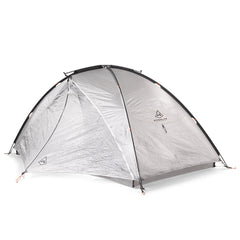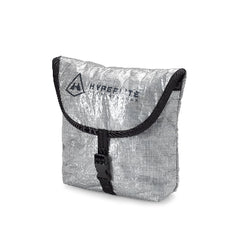Words by Eleanor Moseman, Photos by Eleanor Moseman (@eleanor.moseman) and Erich Weidenkeller (@erich_w_)
Jagged peaks and beckoning glaciers created a torn horizon between the sky and where I stood. I found myself in Ladakh, a region of India that borders Tibet, Kashmir, and Pakistan, which only opened its doors to tourists and outsiders in 1974.

Each turn, summit, and sunrise were a reminder of a former life and adventure along the Tibetan Plateau. After a decade of exploring the Himalayas on the Tibetan side, this was my first return to these mountains in four years, and the beauty was as breathtaking as ever.
My initial plan was to spend the winter in Dharamshala, the home of the Tibetan in-exile government and His Holiness the Dalai Lama. However, my Tibetan friend Pema Tso convinced me to embark on a journey to Ladakh, a region that had fascinated me for years. In the eastern part of Ladakh lay the mythical Changtang. The lure of experiencing nomadic life along the Changtang plateau was too strong to resist. And so, I found myself on a journey across the mountain roads, heading towards Ladakh to document the effects of climate change on nomadic culture and life in small mountain villages through my photography.

After a week of arriving in the capital city of Leh and acclimating to the altitude and cold, I would head out to live with Changpa nomads. The first night, I kept the company of a headless goat and soon realized I would have difficulty surviving at 17,000ft in a work tent at subzero temperatures.


After a few days of dealing with the inner struggle to walk away from a project, I made the difficult decision to return to Leh. As I descended the plateau, my phone received a signal, and there were messages that my gramma was passing away.
A few days after returning to Leh, the sunrise I watched over the Hemi mountain range will never be forgotten as I read the text that "she passed peacefully." Before embarking on trips, I always told my gramma, "I'll see you again." But I didn't expect our next meeting to be so soon. I sensed her presence, and simultaneously, I could see her spirit in the colors of the alpine light bouncing and reflecting around the ice peaks that lay before me. She was free. This moment of loss and acceptance made me reflect on the transient nature of life and cherish fleeting moments.

I have always felt that the mountains give and take. There have been moments of sobbing alone in my tent, releasing pain and sorrow. There have been countless times sharing infinite laughter with new friends echoing through the valleys. The universe reminds us that we are at its mercy and existence is finite and impermanent. It gives and takes. It gives us life; it gives us death. Sometimes, it's the demise of a former self or ego and, in others, the birth of a new experience or connection.
A new relationship is the reason I returned to Delhi a month later. In all the years of traveling and exploring Asia, the first person to accept an invite to join me was arriving. I had met Erich a couple of years earlier at a bike race, and after developing a friendship, we decided to continue our journeys together. It being his first trip to Asia, I had promised to meet him at one of the most hectic airports in the world and personally escort him back to Ladakh. The mountain roads from the lowlands to Ladakh close in mid-November and reopen in April, so our only option was to fly into Leh. Shortly after takeoff, the pilot expressed over the loudspeaker that today was a rare occasion and a lucky day. Erich looked out the window, and we managed to spot the peak of Mt Everest. I was also excited about spotting Mt Kailash. Kailash is considered sacred by several religions, including Buddhism, Hinduism, and Jainism, and is a site of holy pilgrimages.

After Erich had taken a few days to acclimate to the altitude and overcome his jet lag, we began to explore further regions of Ladakh. We would take the 17,582ft Khardung La Pass to the breathtaking Nubra Valley. It felt like we had the entire valley to ourselves, with sand dunes and snow-covered mountains surrounding us. The Shyok River, a tributary of the Indus River, flows through the Nubra Valley, and we can see the Karakoram range in the northeast.

Thirteen years earlier, I cycled along the Southern Silk Road route in the Xinjiang Uyghur Autonomous Region, riding alongside the northeast reaches of the Karakoram Mountains. I questioned what lay beyond those mountains. My trip with Erich to the Nubra Valley answered that curiosity, as once again, the mountains revealed more.
On one of our outings, Erich and I explored a trail that led up a canyon to mountain peaks that had been visible from the village of Hunder. We passed caves that were impossible to access but had been used in ancient times for meditation. Eventually, we found ourselves on a ridgetop gazing up at the mountains and the setting sun. During our return to the village, we discovered a less-trodden path that showed signs of former use. Our imaginations ran wild with thoughts about the significance of this trail. The engineering feats of wood and stone that bridged cliffs and stairsteps along the mountainside were amazing.


Immersed in our surroundings and driven by curiosity, we marveled at the trail's untold stories and the ancient footsteps that had once graced its rugged surface. With research, we discovered that the path was an ancient route connected to the main artery of the Silk Road–a route traders likely used through the Karakorums to Leh. Learning this ignited a daydream of a return to the famous Silk Road city, Kashgar, by this path.
It was beautiful to explore these new places and learn about ancient history with someone as curious as myself. My notebooks are filled with years of travel, but I've had no one to share my discoveries with. Now, I have someone just as eager for knowledge as I am, and together, we share the excitement of experiencing something with such historical value.

After this hike, we would travel to Lamayuru, Yuru Monastery, northwest of Leh. At an elevation of 11,500ft and arriving just before sunrise, we experienced a bitter cold neither of us was familiar with. The village surrounding one of Ladakh's oldest Buddhist monasteries slowly came to life as wisps of smoke rose from the homes, and locals led their cattle out to the frozen pastures.


A red-robed monk invited us into the main prayer hall of the monastery. I thanked him in Tibetan and we followed him inside. We circled clockwise amidst ancient relics and statues of bodhisattvas. Inside the prayer hall, there was an opening to a cave where Milarepa, a legendary Tibetan yogi, had once meditated. Milarepa is celebrated for his unwavering dedication and spiritual growth in his quest for Buddhahood. His practice in the mountains helped him break free from the cycle of confusion, samsara, and find clarity.
It's undeniable that the mountains grant profound rewards for those who seek them.
Leaving the village behind, we crossed over a glacial stream to a trail leading us into the mountains. The gradual incline of the trail was met with a noticeable increase in wind as we ascended towards the pass, accompanied by a drop in temperature.

Upon reaching the summit, the fluttering prayer flags crossed the pass while a horned animal skull rested atop a mound of mani stones.























